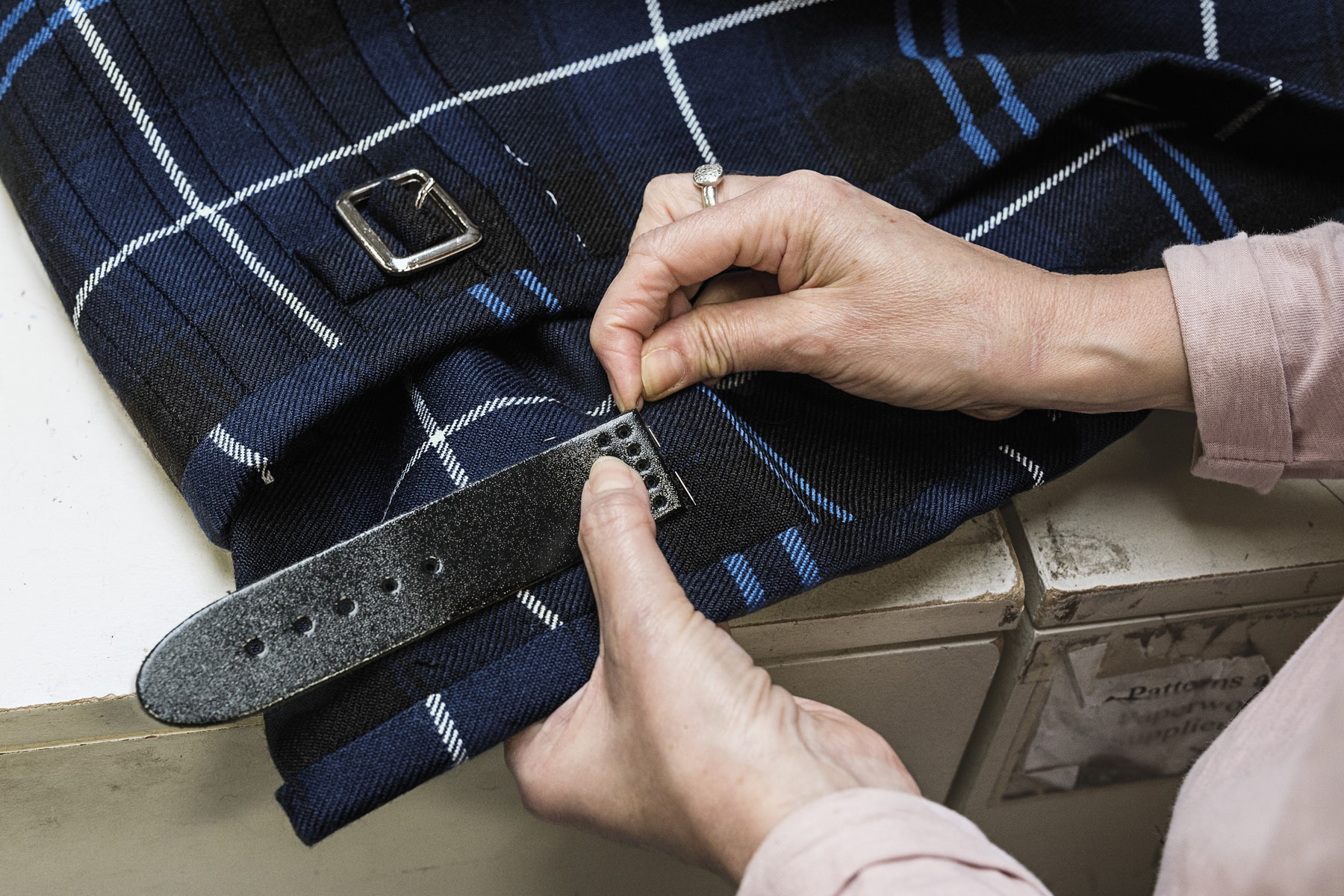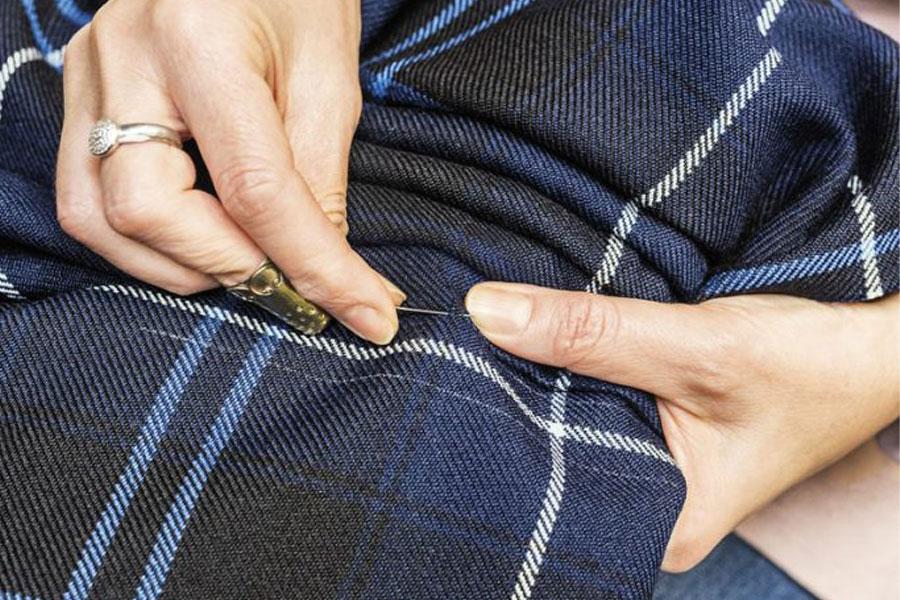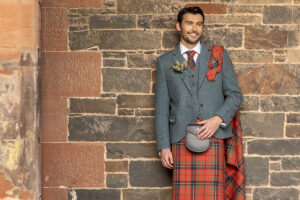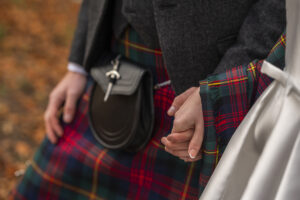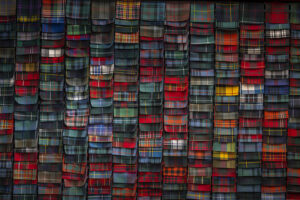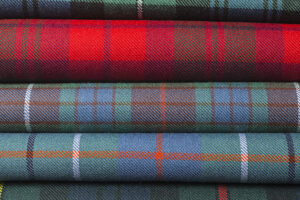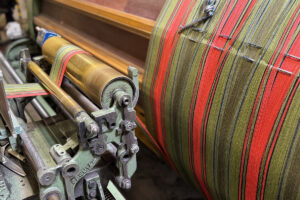How a Kilt is Made
What gives a kilt its charm is the construction, using traditional techniques that have been handed down through the ages. The kilt, which is instantly recognisable all over the world, has become an important part of Scottish identity. Not only is it famous for its undeniable Scottishness, but also for the expert craftsmanship that goes into making one. The kilt's front (apron) is formed of two overlapping panels, while the rear is pleated. A genuine kilt is entirely handcrafted.
Kilts at Lochcarron of Scotland
We offer a made-to-measure kilt making service to ensure you find the style that’s right for you. There are four kilts to choose from in your choice of tartan or tweed. Handmade by our expert kiltmakers, perfect for Scottish highland wear events, the epitome of traditional Scottish Highland dress.
We are proud to weave our traditional kilting cloth in 100% Scottish Wool. Our traditional 8-yard Heavyweight Strome Kilt is hand sewn by highly skilled kiltmakers, who use a traditional time-honoured technique to ensure the highest quality is achieved. Our bespoke service ensures that you find the fit and style of kilt right for you in the tartan of your choice. These kilts are perfect for formal occasions or to simply maintain traditional Scottish Highland dress. Featuring three buckles and straps, canvas lining, two belt loops, knife pleating and triple fringing on the front apron.
Measuring for your Kilt
If you are looking to get measured for your kilt, we recommend arranging your Private Fitting Appointment with us at either our Lochcarron Visitor Centre in Selkirk or our Lochcarron Weavers Heritage Shop in Wester Ross. Our expert team will take precise measurements for your premium quality highland wear, ensuring the perfect fit and will help you with anything else you may need to complete your kilt outfit.
If you can’t make it in store, have a look at our Kilt Measuring Guide on our website, if you should require any assistance, our online team will be happy to help. It is important to note that if you do decide to take you measurements at home, you should ask someone to do this for you and not by yourself as they are unlikely to be accurate and will in turn create an ill-fitting kilt!
There are 4 crucial measurements to be taken to ensure your kilt offers the perfect fit.
- Waist Measurement – Taken around the waist from the top of the hip bone and below the rib cage, around your waist, usually level with your navel,
- Seat Measurement - Can be taken over trousers to measure around the widest part of the hips.
- Kilt Length – Taken when standing straight against a wall from the top of the hipbone to the middle of the kneecap.
- Height Measurement– Full height measurement from the heel to the top of the head.
The length of a kilt is the most important aspect because it cannot be changed. Our kilting cloth has a kilting tuck-in selvedge that serves as the kilt's hem. A traditional Scottish Kilt is not hemmed, and it is advised for the neatest selvedge edge to be visible on the front apron for a tidy finish.
Choosing your Tartan

An essential part of a kilt is the tartan. Start by having a look at our Tartan Finder and explore our selection to find the right tartan for you. If you are of Scottish ancestry, we offer a variety of authentic Scottish clan tartans. Don’t worry if you don't know the clan of your Scottish ancestors, tartan is for everyone, but if you would rather not wear a clan tartan, we also stock a range of universal tartans which are not associated with a clan. If none of these options take your fancy, there is also our Tartan Design Service where you can work with our team to create your own personal tartan design.
The tartan you choose has a big impact on how your kilt will look. For example, a smaller check will create more pleats as opposed to a large check. There are also differences in pleating when it comes to symmetrical and asymmetrical tartans.
A Kilt's Characteristics
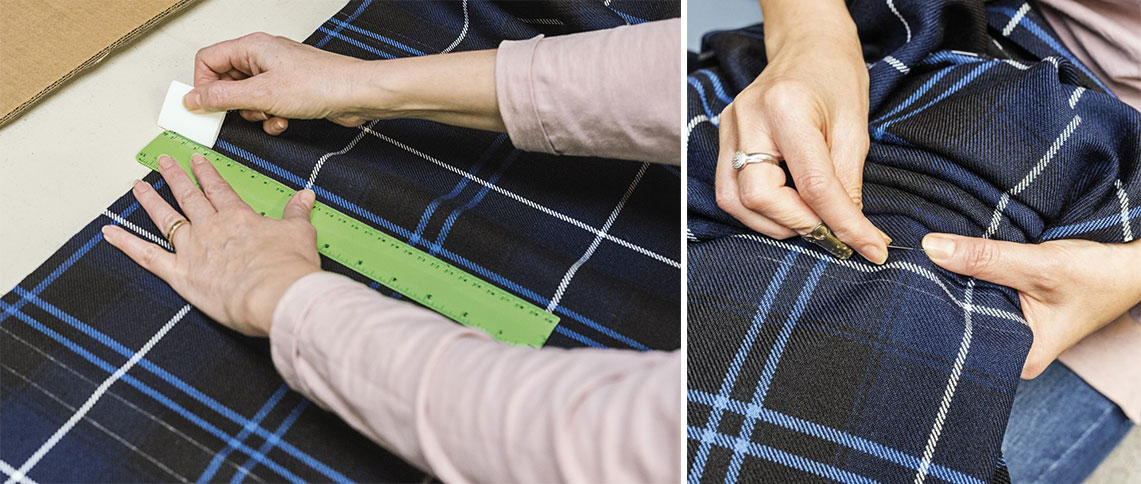
Pleats
Pleats are the main feature of any kilt, and it is critical to understand where and why they are positioned, as well as the calculations for them. The primary goal of pleating is to ensure a balanced design is made across the range of pleats, but also that once sewn, they conform to as much of the original tartan as possible.
To Sett
To sett means to continue the tartan pattern through the pleats so that the front and back look almost identical. This is the most common method of kilt making. The size of the sett in your chosen tartan will affect the number of pleats you have, and a quality kilt maker will be able to match the tartan in the pleated area, among other things. The average man requires between 25 and 34 pleats, with any more or less making the pleats appear too narrow or too wide.
To Stripe
Striping means making each pleat identical with a vertical tartan stripe in the centre of each pleat. This makes the back appear different from the front. This is how military kilts were traditionally made, and it was said that they were made this way to give a more striking and uniform effect.
To Box
Box pleats are a double pleat with two underfolds pressed inward and two upperfolds faced in opposing directions. It is an interesting and rare type of pleating that can be achieved when working To Sett or To Stripe.
Apron
The traditional fringing is a beautiful finish to the kilt. At Lochcarron of Scotland, our kilts feature triple fringing on the apron. It is said that the fringing on a kilt has evolved from the great kilt's torn fabric edges, however we are unsure on the exact reason for this decorative feature!
The Finishing Touches
Belt Loops
Something to keep in mind is that, bizarre as it may sound, the belt loops on the back are really there to hold the sporran rather than the belt! The belt loops are constructed and attached to the kilt following the tartan pattern. Our kilts feature two belt loops!
Kilt Buckles and Straps
Our kilts at Lochcarron of Scotland feature 3 silver buckles and either black or brown leather straps. When the kilt is unbuckled and wrapped around the torso with pleats at the back, the buckle in your right hand goes through the hole in the left hand side of the kilt. Then the buckles on your left hand fasten on to the right side of the kilt.
All chapes are to be strengthened by the use of canvas and felled into position. No raw edges will be seen and if your kilt is perfectly balanced you should see that both buckles match up to the same design feature as the sett of the kilt.
The kilt straps sit on the under apron and on the front apron with at least five holes so that the kilt can be adjusted. However, it does not leave much room for error as you do not want the check off centred.

